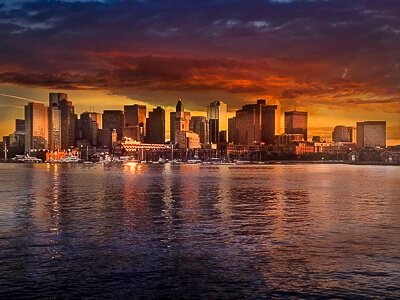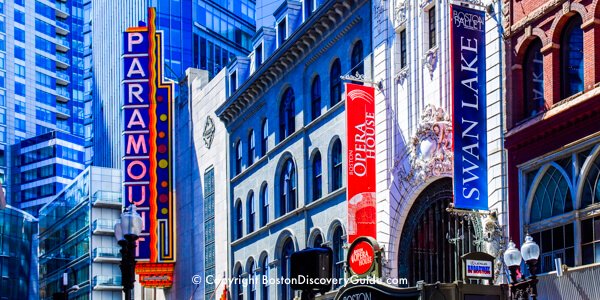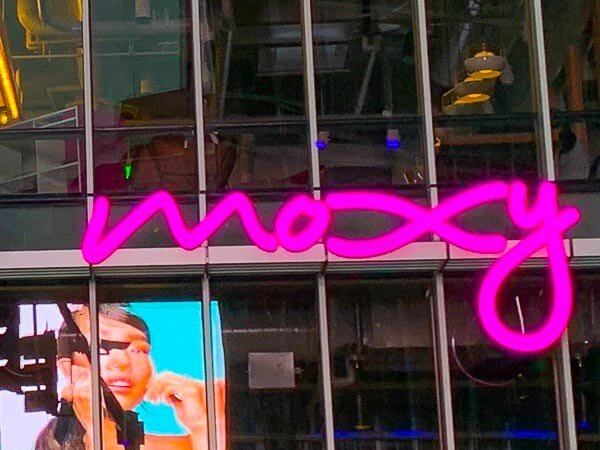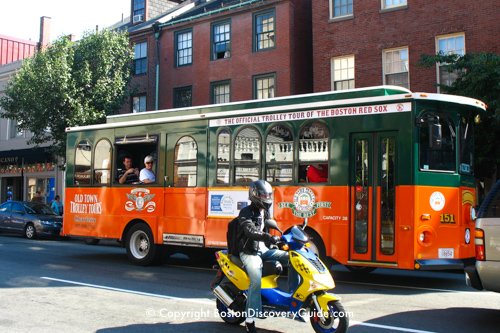Although "No Taxation without Representation!" started being heard in 1750, it became even louder throughout the 1760s and early 1770s in Boston and the Massachusetts Bay Colony.
Not surprisingly, events in England helped shape Boston's move toward revolution, and the American Colonies' move toward freedom.
George III - yes, the infamous King George remembered in history for eventually losing the American Colonies - became King of England in 1760, beginning what would be a 60-year reign.
He immediately had to deal with rebellious Colonists who became more radicalized with each passing year.
Here's the year-by-year account of how the pressures for rebellion built up - and as you'll see, lots of action took places in Boston that you can still visit today.
Top Photo: Boston's Old State House where Patriots shouted, "No taxation without representation!!!"
Boston Discovery Guide is a reader-supported publication. When you buy through our links, we may earn a commission at no additional cost for you. Learn more
Taxation Anger Builds in Boston
1761 Events
Boston's rallying cry from 1750 continues: "No taxation without representation!"
Boston lawyer James Otis argues in the Old State House against passage of the Writs of Assistance, which would allow the British to freely enter and search colonists’ homes and businesses for contraband related to the Molasses Act of 1733. Otis argues that this violates the “natural rights” of the Colonists and that “a man’s house is his castle.”
John Adams—future 2nd President of the future United States—watches Otis in court and later writes in his autobiography, “Then and there, the child Independence was born.”
Also in 1761, fire destroys much of Faneuil Hall.
1762
Faneuil Hall Marketplace is reconstructed, with the new version closely resembling the building that burned. Faneuil Hall's large 2nd floor meeting room is the site of frequent speeches promoting liberty and freedom.
1763
“No taxation without representation!” continues to be heard throughout Boston.
1764
Britain passes the Sugar Act, a refinement of the Molasses Act of 1733, designed to eliminate illegal sugar trade between Massachusetts and the Continental Colonies, and the West Indies. The Sugar Act is also more effective than the Molasses Act because it cuts the tax on molasses in half - meaning that paying the tax is cheaper than avoiding it by smuggling. Still, colonists continue to shout “No taxation without representation” at town meetings and in city-wide protests.
1765
The British pass the Stamp Act, and the Colonists riot in protest at Oliver’s Dock. Lawyer James Otis declares, “Taxation without representation is tyranny.”
Can’t find Oliver’s Dock on current Boston maps? Built in the 1640s when a marshy inlet was dug out to provide a harbor, Oliver’s Dock remained even after the harbor was mostly filled in during the 1720s. After a liberty pole was erected on the land-locked “dock” during a celebration to honor the French Revolution in the 1790s, the area was renamed Liberty Square.
You can find Liberty Square - and the site of the Stamp Act riot - today in the heart of Boston’s Downtown Financial District at the triangle formed by the intersection of Kilby, Water, and Batterymarch Streets.
Meanwhile, also in 1765, Dorchester physician Dr. James Baker opens the first and longest-lasting chocolate mill in America at the site of an old sawmill on the Neponset River.
Baker's descendants sold the company - Baker Chocolate - in 1927 to General Foods, which closed the Dorchester factory in 1965. Sadly, the delicious scent of chocolate no longer perfumes the air of Boston.
Also in 1765, Phyllis Wheatley, a 12-year-old enslaved girl owned by a wealthy Boston family who taught her to read and write, publishes her first poem, the first of many that turn her into a celebrated American poet.
By the time that Wheatley is 20, she publishes her first book of poems—thus becoming the first African-American to publish a book—and is freed from slavery.
1765 land maps note that apple trees planted more than 100 years earlier near the present-day intersection of Charles and Beacon Streets by Boston’s first English settler, William Blaxton, still bear fruit.
1767
In London, the British Parliament passes the Townshend Acts, imposing duties on essentials such as tea, paper, glass, and lead imported by their North American Colonies, and also allowing the quartering of British troops in the Colonies. Seething with anger and resentment - and still committed to "No taxation without representation," the Colonists respond by boycotting British goods and turning to other sources for necessary commodities.
1768
In response to the Colonists’ boycott of British goods, two regiments of British soldiers are posted in Boston to help with tax collection. The Colonists came to regard this as the beginning of the British Occupation of Boston.
One of the British regiments camps out on Boston Common, and part of the other is posted for a short time in Faneuil Hall.
Find Out More about Boston's History on these Fun Tours
1770
The Boston Massacre occurs outside the Old State House when British soldiers kill five Bostonians, including Crispus Attucks, a former runaway enslaved man who is the son of an African father and Native American mother.
Witnesses report that Attucks tries to break up a fight between the British soldiers and Colonists by hitting a soldier with a stick . . . um, perhaps never the best way to end a fight.
As the first of the five to be killed, Attucks is considered the first casualty of the American Revolution and is buried in the Granary Burying Ground.
Later, seven of the soldiers are tried for murder. Lawyer (and future U.S. President) John Adams agrees to represent them in court in order to uphold the principle of rule of law. Five are acquitted and two are found guilty of manslaughter.
The British Parliament repeals the taxes levied under the Townshend Acts on all items except tea. Colonists continue to boycott British tea and develop other supply sources, including smuggling, for their favorite non-alcoholic beverage.
“No taxation without representation!” could be heard throughout Boston, the Massachusetts Bay Colony, and all of the other colonies.
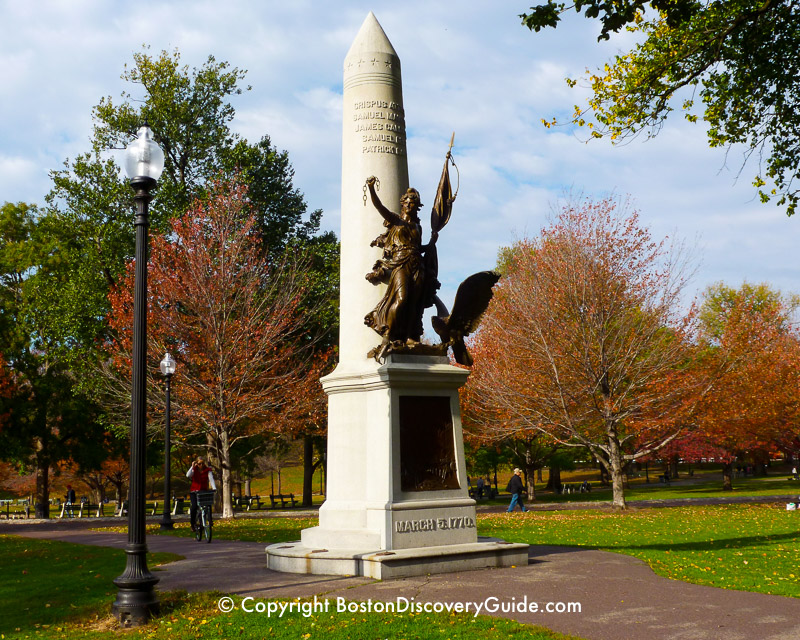
Find out more about the Boston Massacre/Crispus Attucks Monument and other War Memorials in Boston
Find out more things to see and do on Boston Common
1772
At a tension-filled meeting in Faneuil Hall, Samuel Adams proposes that the Massachusetts Bay Colony form a Committee of Correspondence and suggests that the other 12 colonies form similar groups. This lays the groundwork for coordination among the colonies as they harden their resistance against the British.
Find out what happens next: The Boston Tea Party
Where to Stay in Boston's Historic Downtown Neighborhood near Faneuil Marketplace
Check out these top hotels near Faneuil Hall Marketplace
- Bostonian Boston (shown in photo, overlooks Faneuil Marketplace)
- Omni Parker House Hotel
- XV Beacon
- Ames Hotel
More Articles about Boston History
- Find out about Boston's Historic Downtown
- Boston's historical Freedom Trail
- Fun Freedom Trail Tours
- Historic Boston bars and taverns that you can still visit today
- More on the Boston history Timeline


